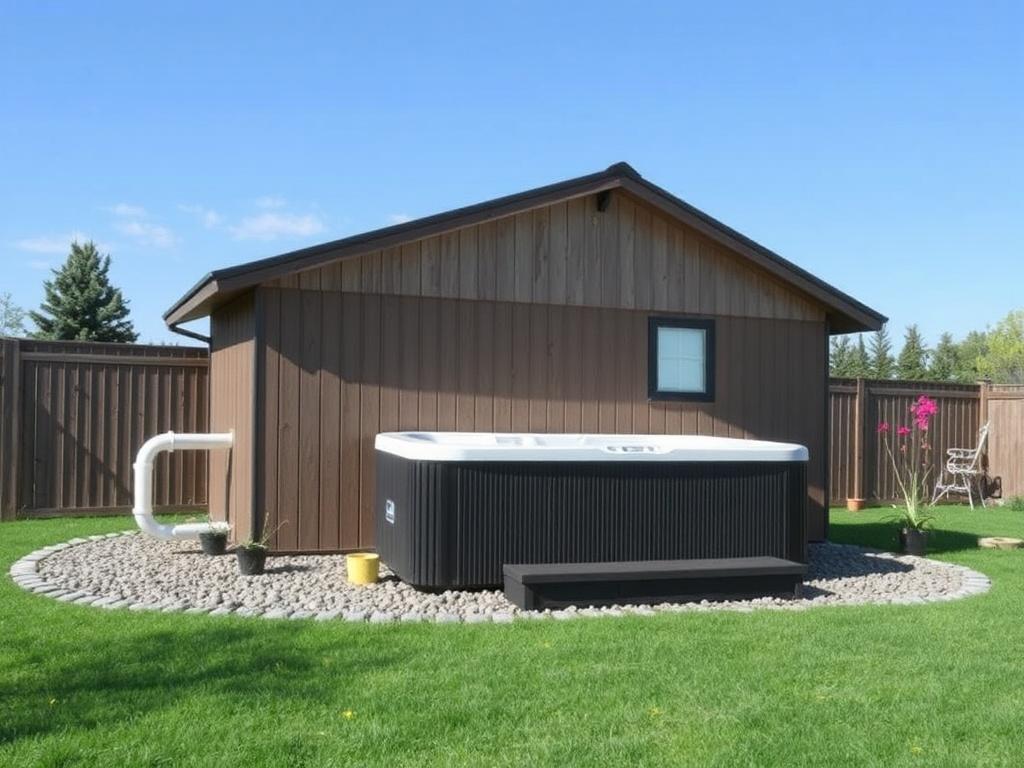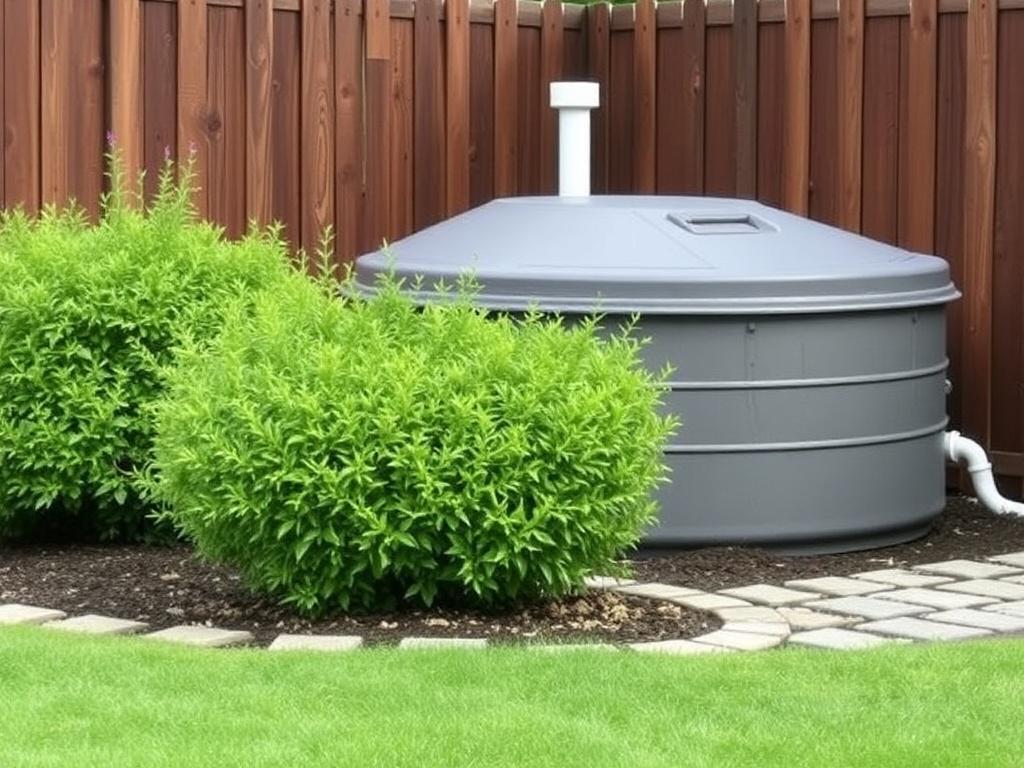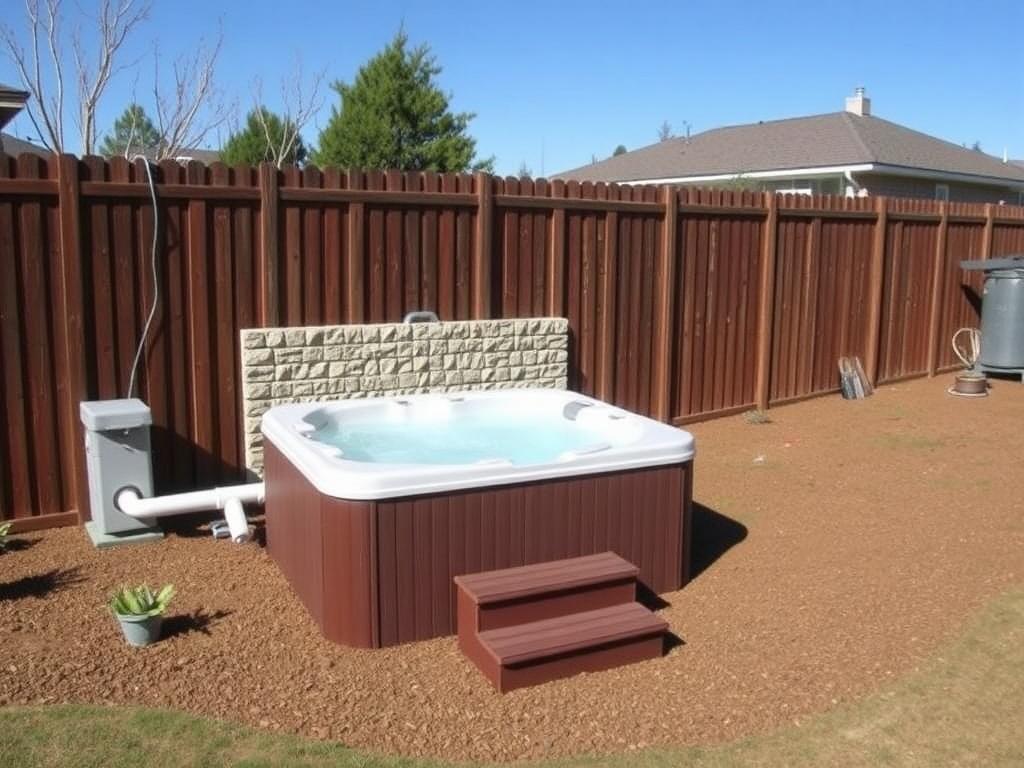- Understanding the Basics: What Is a Septic Tank?
- How Hot Tubs Affect Your Septic Tank System
- The Role of Septic Tank Size and Capacity
- How to Safely Drain Your Hot Tub with a Septic Tank
- Chemical Considerations: What Goes Into Your Septic Tank?
- Planning for Hot Tub Installation with a Septic Tank in Mind
- Location of the Hot Tub
- Septic System Inspection Before Installation
- Maintenance Tips for Hot Tubs and Septic Tanks
- Signs Your Septic Tank May Struggle With Hot Tub Discharge
- Alternative Solutions to Ease Septic Tank Load
- Environmental Impact of Hot Tub Drainage Near Septic Systems
- Local Regulations and Permits to Check Before Installation
- Summary of Key Tips for Managing Septic Tank and Hot Tub Together
- Conclusion
Understanding the Basics: What Is a Septic Tank?
A septic tank is an underground wastewater treatment system commonly used in areas without access to centralized sewer systems. It collects domestic sewage from your home, allowing solids to settle while liquids flow out into a drain field. The system’s primary function is to treat household wastewater naturally, protecting your home and environment from contamination. If you have a septic tank, it means you’re managing your own waste treatment—and this comes with certain responsibilities, especially when you want to add other water-consumable amenities like a hot tub.
Many homeowners view hot tubs as a relaxing luxury that adds value and comfort to their property. But when you pair a septic tank system with a hot tub, there are important factors to consider to avoid system strain, environmental hazards, and expensive repairs. Knowing how your septic tank and hot tubs interact can save you a lot of headaches down the line.
How Hot Tubs Affect Your Septic Tank System
Hot tubs use a significant amount of water, and they require regular draining and refilling. This seemingly simple maintenance activity can impact your septic system in several ways:
- Water Volume Increase: Draining your hot tub releases large volumes of water into your septic tank all at once, which can disrupt the natural settling process inside the tank.
- Chemical Load: Hot tubs often contain chemicals such as chlorine or bromine to keep the water sanitary. Introducing these chemicals into your septic tank may kill the beneficial bacteria that break down solids, reducing efficiency.
- Temperature Effects: The warm, frequently heated water from hot tubs might impact the biological balance within the tank, affecting bacterial activity essential for digestion of waste.
For these reasons, it’s crucial to consider how often you use your hot tub, the size of your septic system, and the type of chemicals involved before moving forward.
The Role of Septic Tank Size and Capacity
Septic tanks come in different sizes, typically measured in gallons, depending on the number of occupants and water usage of a household. The average septic tank size ranges between 1,000 and 1,500 gallons—sized to handle regular household wastewater.
When you add a hot tub to the mix, especially with frequent draining or back-to-back refills, you can temporarily overwhelm your septic tank if it’s too small. This sudden influx can cause solids to be pushed out into the drain field prematurely, leading to clogging and system failure. To illustrate, here is a general guideline table about septic tank sizes relative to household size and additional water use:
| Household Size (Number of People) | Typical Septic Tank Size (Gallons) | Additional Considerations for Hot Tub Usage |
|---|---|---|
| 1-2 | 1,000 | Drain hot tub water slowly; avoid frequent back-to-back draining. |
| 3-4 | 1,250 | Consider larger tank or scheduled maintenance to manage increased load. |
| 5+ | 1,500 or larger | Regular inspections essential; may need enhanced drain field to support water discharge. |
If your septic tank is smaller or older, incorporating a hot tub means extra planning, and possibly increasing the tank or drain field size.
How to Safely Drain Your Hot Tub with a Septic Tank
Draining your hot tub doesn’t have to spell disaster for your septic system if done properly. Here are essential tips to keep in mind:
- Drain Slowly and Gradually: Instead of draining all the water at once, release it in small batches over several days to prevent overwhelming your septic tank.
- Use Minimal Chemicals: Before draining, try to reduce the amount of chlorine, bromine, or other sanitizers in the water by letting it sit uncovered for several days or using neutralizing agents.
- Choose a Safe Location: Direct the discharged water to a landscaped area or garden where it can be absorbed slowly without flooding or runoff issues.
- Avoid Drain Field Discharges: Never drain your hot tub directly onto the septic drain field, as the excess water and chemicals can damage the system’s function.
Following these steps helps protect the bacterial ecosystem inside your septic tank and prevents overloading the system.
Chemical Considerations: What Goes Into Your Septic Tank?
Hot tubs require consistent sanitization to keep the water clean and safe from pathogens. Chemicals commonly used include chlorine, bromine, pH balancers, and algaecides. While these help hot tub water quality, when introduced into your septic tank, they could be problematic.
Septic systems rely on naturally occurring bacteria to break down solids and treat wastewater. Chemicals that kill bacteria in your hot tub water can have the same effect in your septic tank. This inhibits the essential digestion process and can lead to solids overflow or clogged drain fields.
To mitigate these effects:
- Opt for low-impact or biodegradable hot tub chemicals when possible.
- Flush the hot tub water through a neutralization system before draining, if feasible.
- Allow the water to sit untreated for several days before draining, giving chemicals time to dissipate.
By being chemically conscious, you help maintain your septic system’s delicate balance.
Planning for Hot Tub Installation with a Septic Tank in Mind

If you’re thinking about installing a hot tub on a property with a septic system, early planning will pay off handsomely. Here are some factors to weigh during the decision-making process:
Location of the Hot Tub
Placement is key to ensuring your septic system remains unharmed. Ideally, your hot tub should be located:
- Away from your septic tank and drain field (usually at least 50 feet apart, but check local codes).
- On a stable, level surface to prevent water pooling near septic components.
- Accessible for maintenance tasks including draining and pumping.
By positioning your hot tub thoughtfully, you minimize risks to your septic components, particularly the drain field.
Septic System Inspection Before Installation
Before adding a hot tub, it’s wise to have your septic system inspected by a professional. This inspection can evaluate:
- The current health and capacity of the septic tank and drain field.
- If your system can handle increased water volume from the hot tub.
- Whether modifications or repairs will be necessary before installation.
Taking these steps can prevent costly damage and ensure your septic tank and hot tub coexist peacefully.
Maintenance Tips for Hot Tubs and Septic Tanks

Regular upkeep of both your hot tub and septic system is essential to avoid any unpleasant surprises. Here are some practical tips:
- Schedule Septic Tank Pumping: Pump out your septic tank every 3-5 years, or more frequently if your household or hot tub use is heavy.
- Test Water Chemistry Often: Monitor and maintain proper chemical levels in your hot tub to reduce contaminants introduced into your septic system.
- Drain Smartly: Follow the earlier advice to drain the hot tub slowly and away from the septic drain field.
- Inspect Drain Fields: Keep vegetation trimmed; avoid heavy vehicles or structures that can compact soil and damage pipes.
Proper maintenance helps extend the lifespan of both your septic system and hot tub, making your investment worthwhile.
Signs Your Septic Tank May Struggle With Hot Tub Discharge
Being aware of potential problems early can save you from expensive repairs. Look out for:
- Slow drains or backups in sinks and toilets after draining the hot tub.
- Pooling water or bad odors near the septic tank or drain field.
- Unusually lush or soggy grass over your drain field.
- Alarming wastewater treatment issues reported during inspections.
If you notice these signs, contact a septic professional immediately.
Alternative Solutions to Ease Septic Tank Load
If your current septic system isn’t designed to handle frequent hot tub water, consider these alternatives:
| Solution | Description | Pros | Cons |
|---|---|---|---|
| Install a Separate Drainage System | A dedicated drainage line to handle hot tub water separately from septic tank. | Protects septic system from overload and chemicals. | May require permits and extra maintenance. |
| Add a Pre-Treatment Filter | Filters or neutralizers to treat hot tub water before entering septic tank. | Reduces chemical impact; preserves septic bacteria. | Costs extra money upfront and for upkeep. |
| Increase Septic Tank Capacity | Upsize tank or drain field to accommodate additional water. | Allows safe integration of hot tub drainage. | Expensive and may require major construction. |
Each option has benefits and trade-offs, so consider what suits your property and budget.
Environmental Impact of Hot Tub Drainage Near Septic Systems
Beyond just the health of your septic system, improper hot tub drainage can harm the environment. Excess water with chemicals can seep into groundwater, pollute nearby streams, or contaminate soil. Septic systems, when overloaded or chemically damaged, may release untreated wastewater into the environment, endangering local ecosystems.
Being mindful with your hot tub use and septic tank management is a way to protect not only your home but also nature around you.
Local Regulations and Permits to Check Before Installation
Before installing a hot tub near a septic system, consult your local building and health department regulations. Many areas have specific rules around:
- How far a hot tub must be from septic tanks or drain fields.
- Limits on chemical types and amounts introduced into septic systems.
- Permits required for plumbing or drainage modifications.
Compliance ensures your installation is legal, safe, and less likely to cause problems later.
Summary of Key Tips for Managing Septic Tank and Hot Tub Together
| Tip | Reason |
|---|---|
| Drain hot tub slowly and gradually | Prevents system overload and protects bacteria |
| Minimize chemical use before draining | Reduces risk of killing septic bacteria |
| Maintain your septic system regularly | Prevents buildup and extends system lifespan |
| Place hot tub away from septic components | Protects septic tank and drain field from damage |
| Consult professionals before installation | Ensures safe, regulation-compliant setup |
Conclusion

Incorporating a hot tub in a home with a septic tank can be a fantastic way to add relaxation and enjoyment, but it requires thoughtful planning and careful management. Understanding how hot tubs affect septic tank operation—from the water volume and chemical load to the delicate bacterial ecosystems—will help you avoid costly repairs and environmental harm. Through proper placement, slow and mindful draining, regular maintenance, and possibly some system upgrades or modifications, you can enjoy the best of both worlds. Ultimately, respecting the balance between your hot tub and your septic tank ensures long-term functionality, safety, and sustainability, letting you soak away the stress with confidence.
Помогла вам статья?






